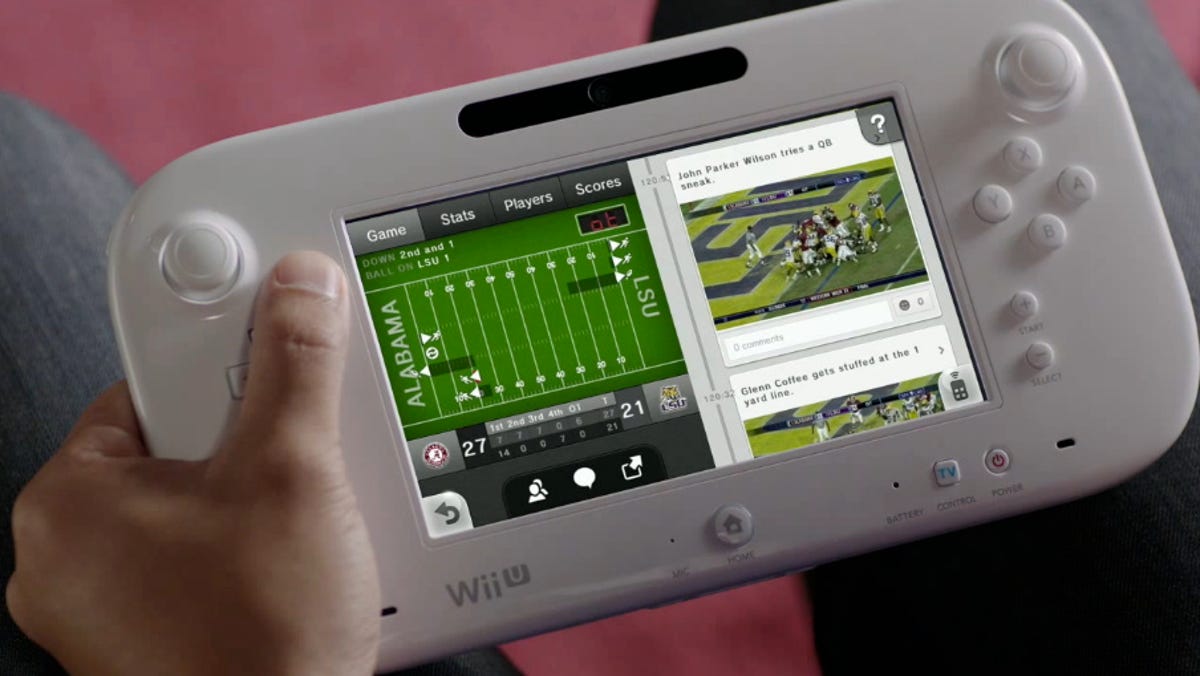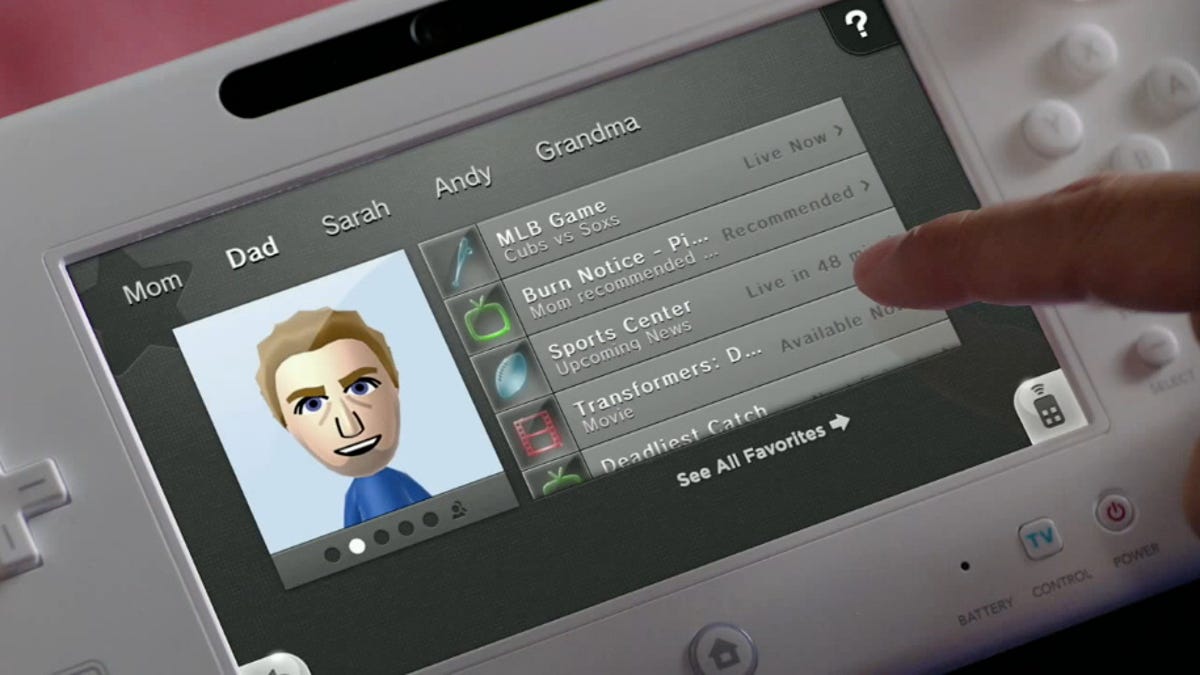As expected, Nintendo finally announced pricing and a release date for the upcoming Wii U, but the biggest surprise of the company’s press conference was the announcement of TVii — Nintendo’s pitch to be the centerpiece of your home entertainment experience.
Wii U gets TVii, coming in November
- Wii U: Full
details on Nintendo’s tablet gaming console - Nintendo
Wii U arrives November 18 starting at $299 - Nintendo
turns on TVii for Wii U - Nintendo
TVii announced for the Wii U (pictures)
It’s no shock that Nintendo is integrating streaming-video services like Netflix, Amazon Instant, Hulu Plus, and YouTube into the Wii U, but TVii is a far more ambitious platform, capable of cross-platform search through both streaming-video services and live TV listings, providing complementary second-screen information on the GamePad screen, and controlling your DVR and other home theater components like a universal remote. That’s a step further than even the Xbox 360’s impressive TV efforts.
In fact, the proper comparison for TVii isn’t any of the streaming portals on the PS3 or Xbox 360 — it’s Google TV with products like the Vizio Co-Star and Sony NSZ-GS7. And while that may seem like an ominous analogy given Google TV’s struggles, at first glance Nintendo’s TVii seems like a much more accessible take on the same concept.


Nintendo
The Wii U GamePad is your universal remote
It was easy to miss in Nintendo’s press conference, but the main thrust of the TVii experience is that the Wii U GamePad is an uber-universal remote for your living room. The GamePad itself sends out remote commands via a built-in IR blaster, so it can control your cable box and TV. At least that’s the pitch; it’s tough to tell without trying it out whether it will achieve the simplicity of a great, activity-based universal remote like a Logitech Harmony.
Full control of all your gear is exactly what Google TV’s been trying to do, but its overcomplicated remotes have doomed it. The TVii’s touch-pad-centered interface seems like a much smarter, less intimidating approach.


Nintendo


Nintendo
Cross-platform browsing and search
TVii also attempts to unify all your video content (streaming, live TV, and recorded shows) into a single integrated interface. You browse or search for a show, and TVii tells you where you can watch it.
Again, the ability to browse and search video content — regardless of where it resides — is exactly the pitch for Google TV. But so far the TVii’s interface looks a lot easier to use, especially since you’re navigating a touch screen, rather than an onscreen interface. (The Xbox 360 can also search through live TV content through its specialized Fios and Comcast apps, but those apps don’t offer all the channels available on your cable box.)
Still, there’s plenty of reason for skepticism over how well Nintendo will be able to integrate with cable and satellite DVRs. While Nintendo touted TVii’s TiVo integration, other TV providers weren’t mentioned, although Nintendo says it will work with all major cable and satellite providers, plus over-the-air broadcasts. But the devil is in the details; Google TV technically works with all cable and satellite providers, but only offers deep integration with Dish Network. If Nintendo is similarly limited to TiVo, it won’t work as seamlessly as you’d like with other DVRs.


Nintendo
Worthwhile second-screen information?
TVii is also promising an interactive second-screen experience on the GamePad’s screen when you’re watching live and recorded baseball, basketball, and football games. So if you’re watching college football, you can use the GamePad to get additional stats and scores, all powered by i.TV. (Regular TV shows and movies will get a less interactive experience with info from IMDb and Wikipedia.)
I’m generally a “second-screen” skeptic, having seen too many underwhelming apps touting a more “immersive experience,” but Nintendo’s implementation seems like it could actually be worthwhile.


Nintendo
Profiles
TVii also offers the ability to set up individual profiles, so each user can get a customized interface and recommendations. Nothing revolutionary, but it should make it easier to find the content you’re looking for, without sifting through channels and recommendations that don’t apply to you.
Promising, but too early to tell
Nintendo has tended to lag behind Microsoft and Sony on the home entertainment front, but TVii is an interesting direction that fits well with Nintendo’s family-centered approach to gaming. Of course, it all depends on how well it actually works and there are still plenty of unanswered questions, especially regarding cable and satellite box integration.
But I think it’s a mistake to discount TVii based on Nintendo’s reputation, which looks to accomplish much of what Google TV is trying to do in a much more accessible package.
Video: CNET’s Jeff Bakalar interviews the man behind Nintendo TVii, Zach Fountain


Now playing:
Watch this:
Interview with the man behind Nintendo TVii, Zach Fountain
5:51




